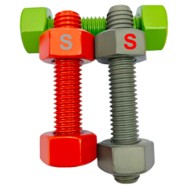
Making sense of clothing measures at times resembles reading a coded message
- Spotting your body's key contours should begin the process
- Get correct chest, waist and hip stats to pick the right size
- Consult each label's size guide prior to purchase
Refrain from using size stickers only because they misrepresent Rather, measure yourself and verify with the size map. Refining taste requires exploration and repeated testing.
Understanding the enigma of measurement guides
Inconsistent fit systems lead to common buying confusion. Converting measurement systems sometimes tests patience, since companies implement varied fit benchmarks. Armed with guidance and tools you can navigate fit complexities.
- Primary step: identify whether the brand follows US, EU, UK or Asian norms. Regularly you will see US, UK, European and Asian benchmarks.
- Afterwards, align your chest, waist, hip and overall length numbers. Match those figures to your personal body stats.
- In conclusion, follow the label's size recommendations for nuances. They commonly list helpful tips, exceptions and care notes.
Pinpointing perfect sizing during purchase
The universe of fit systems sometimes bewilders customers. Brands differ so standard labels like medium can shift meaning. Divergence is rooted in each label's particular measurement scheme. Hence commence by measuring yourself accurately before buying. Secure a tailor's tape to measure chest, waist and hip values. Avoid relying purely on your customary size label. Even under one maker, cuts and types can change the fit. Honing in on ideal fit calls for tests across sizes and shapes.

Choosing standard versus custom dimensions
When sizing applies to items like furniture or fittings you must choose. Both options carry clear pros and cons. Generic sizes supply ready availability and cost benefits. Made-to-order dimensions accommodate unique spatial constraints
- Review needs against available funds before settling on size
- Take precise measurements of the space or your shape
- Research makers and options thoroughly before purchase
In conclusion the best fit choice corresponds to your needs.
Tackling the complexities of global size translation
Bridging country and brand dimensions frequently seems labyrinthine. Luckily useful conversion charts and guides exist to assist. Initiate learning about prevalent garment and shoe sizing conventions. Reference conversion tables for matching sizes across regions. Bear in mind that body shape and silhouette influence ideal choice. Consult product reviews and fit guidance from other buyers.
A straightforward approach to understanding sizes
Tackling clothing charts often feels baffling. Retailers frequently apply their own fit templates, but this guide will clarify steps and tools to help you.
- Start by accurately measuring yourself with a soft tape
- Next, align your measurements with the brand's size table
- Consider your silhouette because form affects fit perception
In the end, trying items on gives the clearest sense of fit.
A full guide to standard male and female measurement sets
Browsing digitally makes sizing decisions more complicated. Hence we've put together a comprehensive manual for gendered charts. From pants to shirts and dresses these steps ease size selection.
- Initially recognise variation across brands and countries
- Then, ensure you have waist, hip, bust and shoulder figures on hand
- At last, opt for the larger option if measurements fall in-between
Applying these steps equips you to handle sizing charts confidently. Happy shopping!

Helping parents understand children's size charts
Selecting proper kids' clothing sizes can be a struggle. Youngsters gain size quickly so charts soon change. Use the brand's measurement table and ignore age guesses. Record your child's chest, waist and stature for proper fitTaking bust, waist and hip measurements correctly
Accurate body measurements are essential for flattering fits. Grab a flexible measuring band and an assistant for precise measurement. Adopt a neutral upright posture with feet apart and relaxed shoulders
All about size spans from extra small to double extra large
Contemporary size systems can be confusing and inconsistent. Because brands differ dramatically, consistent sizing is elusive. A careful examination of size bands will aid understanding. Below we explore practical interpretations of size codes!
Encouraging celebration of body diversity

Celebrating varied body shapes fosters broader acceptance. This involves rejecting narratives that demand one ideal shape. Let's cultivate environments that validate every shape and size.
- Adopt routines that strengthen body confidence and care Adopt routines that strengthen body confidence and care Adopt Size routines that strengthen body confidence and care Adopt routines that strengthen body confidence and care
- Hold in mind that appeal manifests across varied sizes
- Call out portrayals and narratives that sustain narrow sizing norms
- Opt for daily practices that reinforce body love
